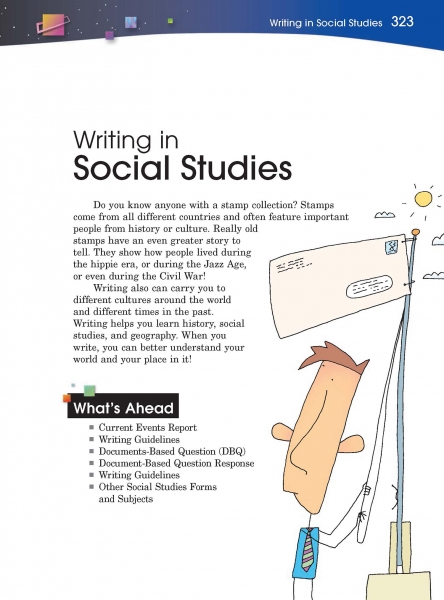Page 323 from

Start-Up Activity
Ask students if they can guess which historical documents these sentence starters came from:
-
"We hold these truths to be self-evident, that all men are created equal . . ." (The Declaration of Independence)
-
"We the People of the United States, in Order to form a more perfect Union . . ." (The United States Constitution)
-
"Four score and seven years ago our fathers brought forth on this continent, a new nation . . ." (The Gettysburg Address)
Point out that the U.S. stands on a bedrock of writing. Whenever some important change must occur, people write a new law. After the fact, other people write about the change.
Tell your students they will get to try their hands at writing in social studies. Maybe they'll even make history.
Think About It
“History, in general, only informs us of what bad government is.”
—Thomas Jefferson

Start-Up Activity
Ask students if they can guess which historical documents these sentence starters came from:
-
"We hold these truths to be self-evident, that all men are created equal . . ." (The Declaration of Independence)
-
"We the People of the United States, in Order to form a more perfect Union . . ." (The United States Constitution)
-
"Four score and seven years ago our fathers brought forth on this continent, a new nation . . ." (The Gettysburg Address)
Point out that the U.S. stands on a bedrock of writing. Whenever some important change must occur, people write a new law. After the fact, other people write about the change.
Tell your students they will get to try their hands at writing in social studies. Maybe they'll even make history.
Think About It
“History, in general, only informs us of what bad government is.”
—Thomas Jefferson
